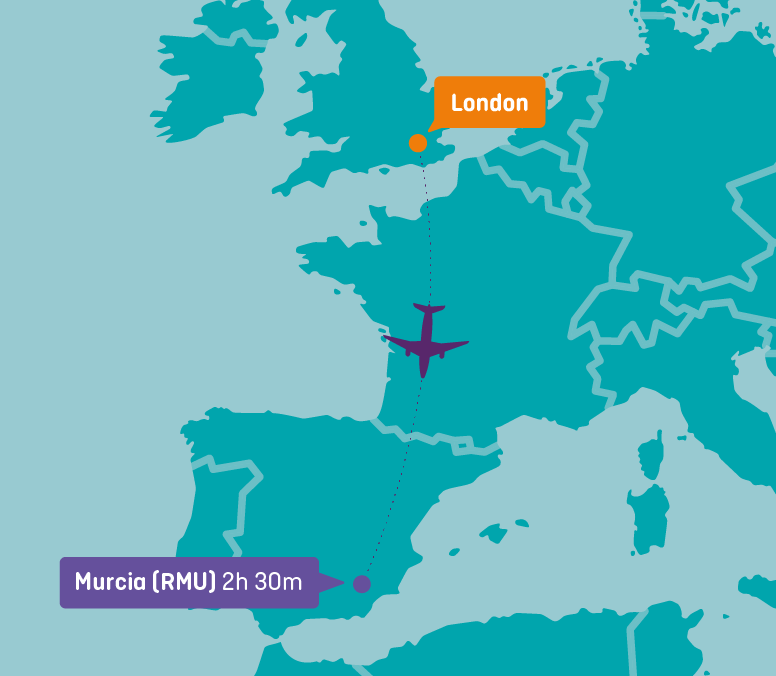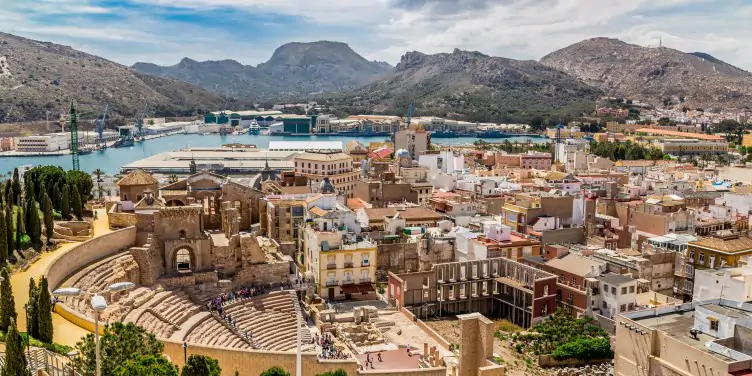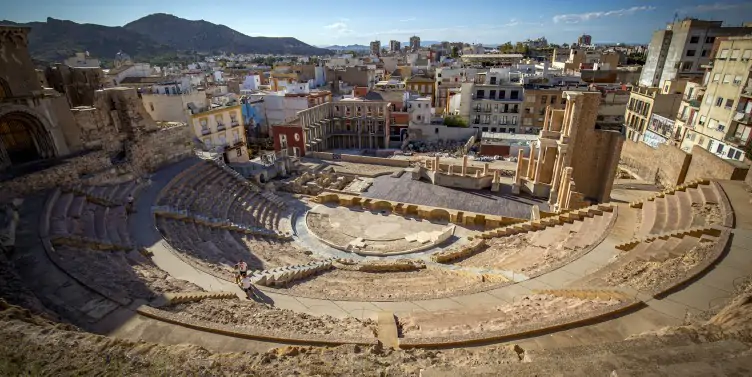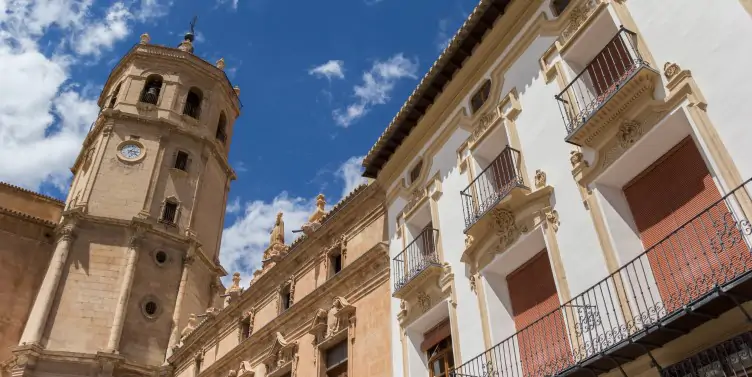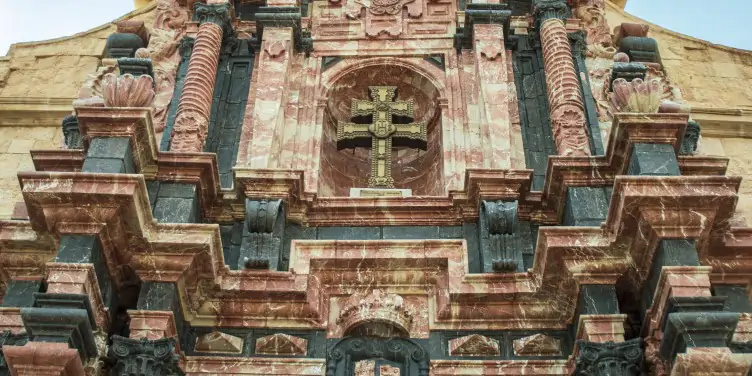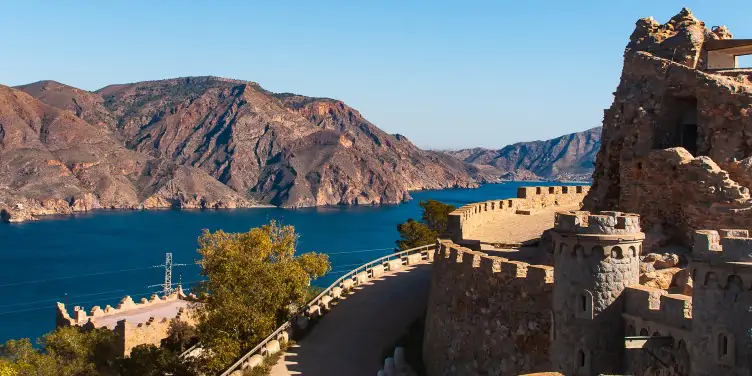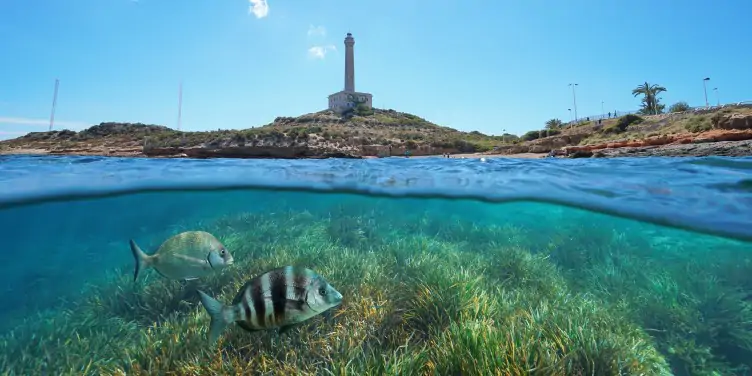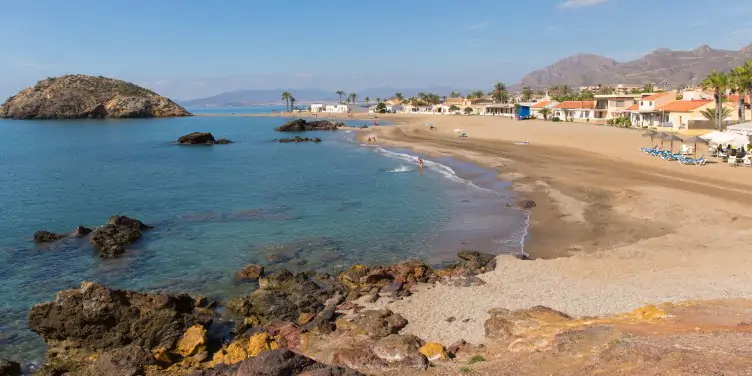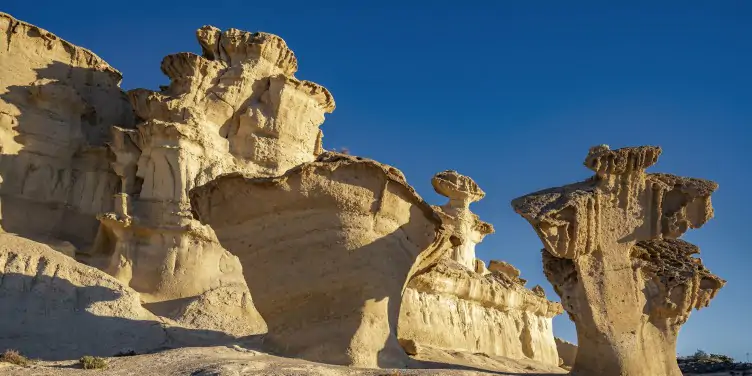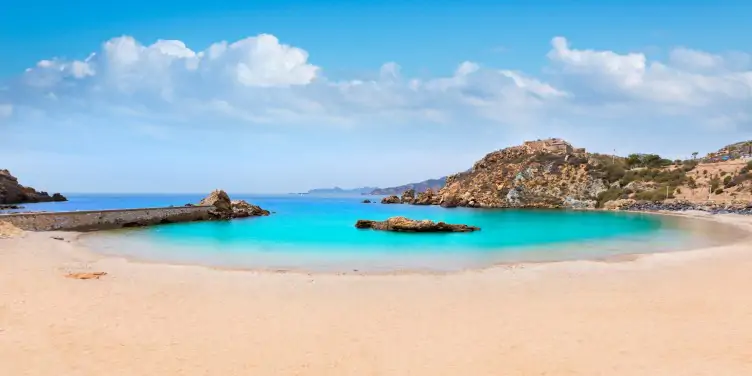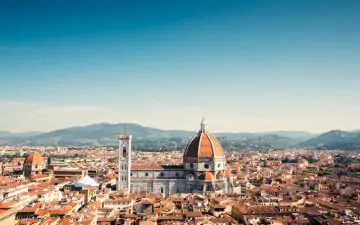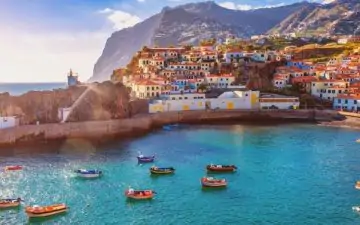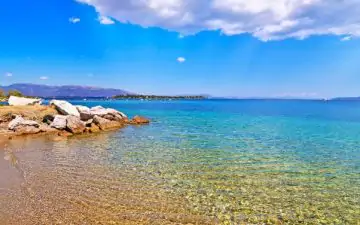A local’s guide on what to do in Murcia, Spain
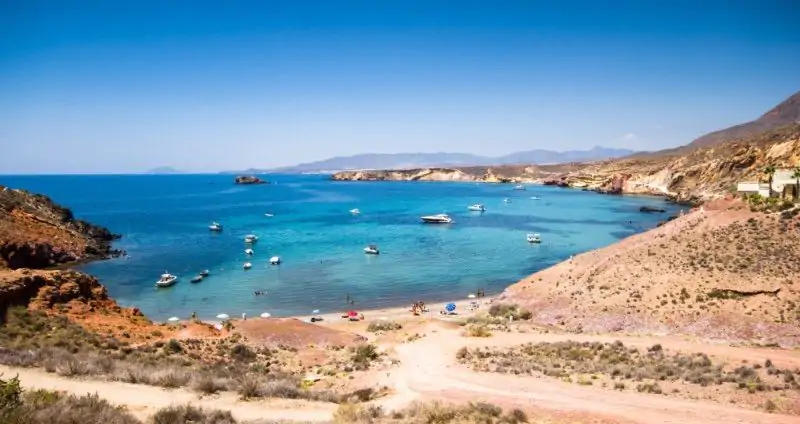
Welcome to Murcia, an incredible hidden gem tucked away in the southeastern region of Spain. Get ready to uncover the rich history, breathtaking beaches, and mouthwatering cuisine that await you in this enchanting destination.
Join our local tour guide, Carlos Riel, as he takes you on an unforgettable journey through the wonders of Murcia. We’re here to show you a side of the region that only the locals know, taking you off the beaten path and straight into the heart of authentic Spanish culture.
Here’s a local’s guide to what to do in Murcia.
- Where is Murcia in Spain?
- How long is the flight to Murcia?
- What’s the weather like in Murcia?
- What’s the best time of year to visit Murcia?
- Roman Theatre of Cartagena
- The City of Lorca
- Caravaca de la Cruz
- Batería de Castillitos
- Enjoy the local produce
- Diving in Cabo de Palos
- Beaches at Puerto de Mazarron
- Erosion of Bolnuevo
- Playa de Cala Cortina
Where is Murcia in Spain?
The region of Murcia is nestled in the southeast of Spain on the Costa Cálida. It’s sandwiched between Andalusia to the west and Valencia to the north, and is right on the coast of the Mediterranean Sea.
How long is the flight to Murcia?
Flights from London to Región de Murcia International Airport take about 2 hours and 30 minutes. You can also fly into Alicante Airport and drive around 45 minutes to get into Murcia.
There are direct flights from airports all over the UK including Gatwick, Stansted, Luton, Bournemouth, Birmingham, and Bristol. Airlines Easyjet, Ryanair, and Jet2 all fly to Murcia or Alicante, so you’ve got plenty of options.
What’s the weather like in Murcia?
Murcia is one of the warmer regions in Spain and one of the driest regions in the whole of Europe, with about 300 sunny days per year. Its Mediterranean climate means mild winters and hot summers.
July is the hottest month, boasting an average of 27°C, while the coldest month tends to be January, where temperatures average around 10°C.
What’s the best time of year to visit Murcia?
If you’re planning a trip to Murcia, the best times to visit are from March through June and September through November.
During these months, you’ll enjoy warm temperatures and almost no rain, which is perfect for exploring all that this vibrant city has to offer.
If you’re a sun worshipper and prefer the hot weather, the peak summer months of June through August are your best bet. But beware, even the quietest of beaches can get quite crowded.
Visit sites rich in history
1. Roman Theatre of Cartagena
Step back in time at the Roman Theatre in Cartagena and immerse yourself in the ancient ruins that date back to the 1st century BC.
Discovered recently in just 1988, the amphitheatre is very well-preserved, making it easy to imagine the grand spectacles that once took place within its walls. The on-site museum displays many of the items discovered during the excavation work.
Top tip: Entry to the site and museum is 6 euros per adult. We recommend setting aside a good hour for your visit.
2. The City of Lorca
Walking the enchanting narrow streets of Lorca offers a history lesson in itself. The buildings tell the tale of its rich cultural past, a melting pot of three main civilisations – Christian, Jewish and Muslim – which has shaped this captivating city.
Visit the stunning castle Castillo de Lorca – Fortaleza del Sol, which translates as ‘the fortress of the sun’ for panoramic views of the city. While the Museo Paso Blanco is another must-see, a museum showcasing the city’s religious heritage.
The characterful Plaza de Espana is a great place to grab a drink and bite to eat, while watching the locals, and world go by. It’s here you’ll also find the Collegiate Church of San Patricio, which was declared a National Historic-Artistic Monument back in 1941.
3. Caravaca de la Cruz
Caravaca is a captivating town known for its history and religious significance. It’s home to the Basilica-Santuario de la Vera Cruz, a stunning Basilica (a Catholic church building) with a Baroque façade made from local marble.
Perched on top of an ancient Islamic fortress, the Basilica is home to a miraculous cross thought to be a fragment of the cross on which Jesus Christ was crucified. This has drawn thousands of pilgrims to the town over centuries.
But it’s not just about what’s inside the Basilica – from here you get exceptional panoramic views of the town, making it a must-visit.
Top tip: It’s free to visit the Basilica, but entry to the museum costs €3 per person.
The perfect road trip
4. Batería de Castillitos
Discover the historical military fortress of Batería de Castillitos. Immerse yourself in the rich history as you explore the complex network of tunnels and battlements.
Perched on a hilltop, this architectural marvel offers panoramic views of the surrounding countryside and coastline.
You can only get here by car, bicycle or motorbike as the roads are tricky and too narrow for buses, but the views along the way up the hill are magnificent.
Top tip: You’ll need about an hour here and entry is free, but there are no toilets or restaurant facilities, so come prepared!
5. Enjoy the local produce
No visit to Spain is complete without indulging in the local cuisine. And Murcia is no different. Restaurants use locally grown ingredients and seafood sourced from the nearby ports, so the food is always fresh.
Be sure to sample traditional local Murcian dishes like marineras tapas (a hard bread, topped with Russian salad with anchovies), zarangollo (a vegetable and egg based dish), and arroz caldero also known as ‘rice cauldron’ (a comforting fish, vegetable and rice dish).
A favourite restaurant for locals is Bocana De Palos. Here you can sit on the terrace, soaking in the breathtaking sea views, with local beer (Estrella de Levante) in hand.
Top tip: If you’re looking for a snack on the go, give the famous Murcian Pastel de Carne a try. It’s a savoury puff-pastry meat pie that’s been around since 1695, so you know it’s going to be good! You’ll find them in bakeries and cake shops region-wide.
Beach towns where the locals go
6. Diving in Cabo de Palos
As well as being a great spot to watch the sunset, Cabo de Palos is a popular area for scuba diving. It’s a place where the waters are crystal clear and calm, making it an ideal location for underwater exploration.
What makes this spot even more special is its marine biodiversity. The Islas Hormigas Marine Reserve, just over 2 miles off the coast, is one of the best dive areas in Spain. Large groupers, barracudas, sunfish, and eagle rays call this place home.
Top tip: Very few beaches in Cabo de Palos have public facilities like toilets, or places to eat or drink. Parking can also be a bit tricky, so your best bet is to park in the marina and walk the rest of the way.
7. Beaches at Puerto de Mazarrón
Puerto de Mazarron is a treasure trove of gorgeous beaches. For starters, you’ve got Playa de Bahia and Playa Del Rihuete, both loved by locals and tourists alike.
If you’re looking for something a bit more serene, there’s Playa de la Reya, a horseshoe-shaped beach with golden sand and crystal clear water. So, whether you’re into sunbathing, swimming, or just taking a leisurely stroll, Puerto de Mazarrón has a beach for every mood.
Top tip: The urban beaches close to the centre of Puerto de Mazarrón have toilets, parking and restaurants. But the beaches outside of the town centre have little to no facilities.
8. Erosion of Bolnuevo
Witness the natural wonders of Bolnuevo, where time and nature have sculpted unique rock formations along the coastline. The eroded rock is made up of soft sandstone and clay layers that have been gradually worn away by the elements, creating stunning shapes and textures.
As you explore this stunning landscape, you will see towering pillars, arches, caves, and other intricate formations that defy logic. The constantly changing colours and textures of the rocks add to their captivating beauty. And if you’re lucky enough to catch a sunrise or sunset here, you’ll be treated to a spectacular display of light and shadow dancing across the landscape. Many visitors come to Bolnuevo simply to marvel at these natural wonders.
Top tip: Bolnuevo beach has foot-washes, lifeguards, and public toilets, some adapted for disabled use. Parking at the urban end can be challenging, but there is a large parking area at the foot of the rocks.
9. Playa de Cala Cortina
Experience the tranquillity of Playa de Cala Cortina. Nestled in a sheltered cove, this charming beach offers a peaceful retreat and is generally quiet and free of tourists.
Enjoy a leisurely stroll along the promenade or savour breathtaking views of the sparkling Mediterranean Sea. This is where the locals escape to enjoy the beach or do some fishing.
Top tip: Showers and toilets are available but parking may be limited, especially on weekends, so you may prefer to visit midweek.
If you’re ready to enjoy the rich history, stunning beaches, and mouthwatering cuisine of Murcia, don’t forget your Spanish travel insurance.
Feeling inspired to discover more highlights of Spain? Read our guide to the 10 Spanish city breaks to add to your bucket list, or relax and unwind with these 5 quiet holiday resorts in Spain’s Costa de la Luz.




